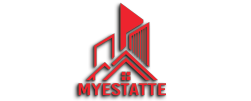
Monitoring radon levels in homes is critical whether you own a home or renting. Radon is a colorless, odorless, and tasteless radioactive gas that can seep into homes through cracks in the foundation, walls, and floors. Approximately 17.8% of Canadian homes have radon levels at or above the current guideline of 200 Bq/m³. This is a substantial increase from previous estimates, highlighting the growing concern about radon exposure.
Effective monitoring and mitigation of radon levels can significantly reduce this risk and save lives in the long term.
Here are five useful steps homeowners or renters can take to mitigate radon levels:
Test Your Home for Radon: The first step is to test your home using a radon test kit, which can be purchased online or at hardware stores. We strongly advice that you hire a professional to conduct the test.
Seal Cracks and Openings: Radon can enter your home through cracks in the foundation, walls, and floors. Sealing these openings with caulk or other appropriate materials can help reduce radon levels.
Increase Ventilation: Improving the ventilation in your home by opening windows and using fans can help disperse radon gas and reduce its concentration indoors.
Install a Radon Mitigation System: If your radon levels are high, consider installing a radon mitigation system. These systems typically involve a vent pipe and fan that pull radon from beneath the house and vent it outside.
Regular Monitoring: Continuous monitoring of radon levels is essential, as they can fluctuate over time. Using a radon detector can help you keep track of radon levels and ensure they remain low.
For more information and resources, homeowners and renters can visit the following government websites:
New Brunswick Department of Health Radon Information
By taking these steps and utilizing available resources, homeowners and renters can protect themselves and their families from the dangers of radon exposure.
Visit for more information:
New study shows dangerous levels of radon gas in millions of Canadian homes
Radon Facts and Prevention Tips for Your Clients
*The information provided here is for educational purposes only. Consult real estate, financial and legal professionals before making any personal, financial or real estate decisions.
*This is not intended to solicit Buyers or Sellers under contract.
Affiliate Disclosure Statement
This website contains affiliate links, which means I may earn a commission if you click on a link and make a purchase. This comes at no additional cost to you. I only recommend products or services that I believe may be beneficial, but I encourage you to conduct your own research before making any purchase.
As an Amazon Associate and an affiliate for other programs, I earn from qualifying purchases. All opinions expressed are my own and do not reflect the views of any affiliate partners.
By using this website, you acknowledge that any transactions made through affiliate links are between you and the third-party vendor. I am not responsible for any issues arising from your purchase, including but not limited to product quality, delivery, or service disputes.
If you have any questions, feel free to contact me.


